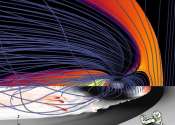NSF's newest solar telescope produces first images, most detailed images of the sun
Just released first images from the National Science Foundation's Daniel K. Inouye Solar Telescope reveal unprecedented detail of the sun's surface and preview the world-class products to come from this preeminent 4-meter ...









